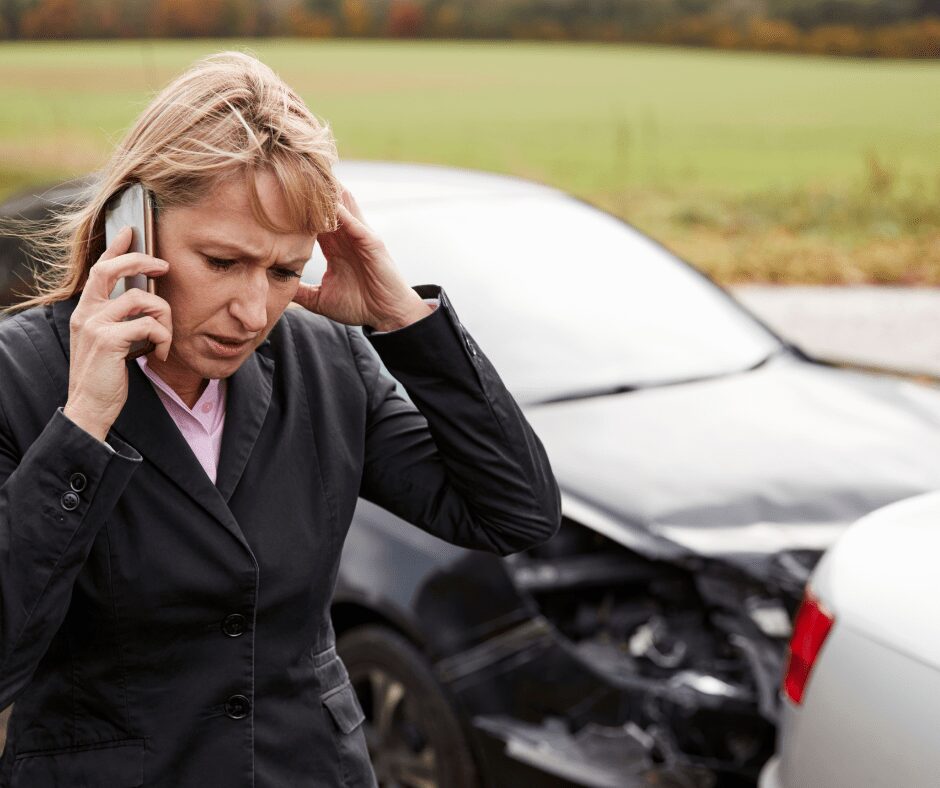 Steps to Take After Being Involved in a Car Crash in New York
Steps to Take After Being Involved in a Car Crash in New York
A car accident doesn’t just leave physical scars—it can unravel your sense of security, disrupt your mental well-being, and create lasting psychological trauma. If you’ve been in a collision, you may be wondering: Can you sue for emotional distress after a car accident? The answer depends on the legal framework surrounding emotional distress car accident NY claims.
While every case is different, the likelihood of a successful claim often depends on how directly the accident affected you. If you suffered significant emotional trauma tied to a physical injury or experienced a near-miss that left you psychologically shaken, your chances of recovering damages increase. Overall, courts consider factors such as medical diagnoses, the impact on your daily life, and whether your distress meets the legal threshold under New York law.
At Greenspan & Greenspan P.C., we know the aftermath of a car accident is overwhelming. Beyond physical injuries, the emotional toll can feel just as heavy. If you’re struggling with emotional distress, we’re here to help. Our firm has helped countless accident victims in New York recover compensation for their pain and suffering.
Video Transcript
“Hi, I’m Mike Greenspan, a New York personal injury attorney. A car crash doesn’t just leave physical scars — it can leave lasting emotional ones too. And yes, in New York, you can sue for emotional distress.
We’ve helped clients who suffer from anxiety, PTSD, sleep issues, and depression after a serious accident. These invisible injuries are very real — and under New York law, they can be part of your compensation claim, especially when tied to a physical injury or serious trauma. But proving emotional distress isn’t easy — it takes experience and strong documentation.
At Greenspan & Greenspan, we know how to tell the full story of what you’ve gone through — physically and emotionally. If you’re struggling after a crash, let’s talk. The consultation is free, and you don’t pay unless we win.”
What Qualifies as Car Accident Emotional Distress?
Car accident emotional distress refers to an accident’s psychological impact ranging from anxiety and depression to post-traumatic stress disorder (PTSD). Unlike physical injuries, emotional suffering is invisible but no less real. Common symptoms include:
- Persistent anxiety or panic attacks;
- Depression and mood swings;
- Sleep disturbances, nightmares, or insomnia;
- Flashbacks and PTSD-related symptoms; and
- A newfound fear of driving or riding in a car
If left unaddressed, emotional distress can interfere with daily life, work, and personal relationships, making recovery even more challenging.
Can You Sue for Emotional Distress Without a Physical Injury?
Seeking compensation for emotional distress without a physical injury can be challenging, but it is possible. New York courts apply the “zone of danger” rule. The zone of danger rule ensures that individuals who directly experience or witness a traumatic event—such as a serious crash involving a family member—are not left without legal recourse.
The zone of danger rule allows plaintiffs to seek damages for emotional distress even without physical injury if:
- The defendant’s negligence placed the plaintiff at immediate risk of harm, or
- The plaintiff witnessed a close family member suffer serious injury or death.
For example, suppose you narrowly avoided a head-on collision and developed PTSD. In that case, you might have a valid emotional distress claim if you can show that the near-collision resulted from the defendant’s negligence. Similarly, if you saw a loved one severely injured in the crash, you may be entitled to compensation.
New York courts have clarified that while emotional distress claims without physical injury are more difficult to prove, they are not impossible. Successful cases often hinge on well-documented psychological evaluations and expert testimony demonstrating the trauma’s severe impact. If you believe you have a claim, consulting with an attorney experienced in handling car accident emotional distress cases is crucial to understanding your legal options and pursuing fair compensation.
How Can I Prove My Pain and Suffering Claim?
New York law recognizes emotional distress as a compensable damage in pain and suffering claim cases. However, proving emotional distress requires substantial evidence that demonstrates the psychological impact of the accident on your daily life. Courts in New York do not grant compensation based on claims alone; you must provide tangible proof of how the trauma has affected your well-being, work, and relationships. Evidence can include professional evaluations, personal documentation, and testimony from those who have witnessed your struggles.
Here are some types of evidence that can help support your claim:
- Medical records—diagnoses from mental health professionals showing anxiety, PTSD, or depression;
- Therapy notes—documentation from a psychologist or psychiatrist detailing the emotional impact;
- Expert testimony—mental health professionals testifying to the severity of your condition;
- Personal journals or testimonies—detailed records of your struggles, sleepless nights, or panic episodes; and
- Witness statements—accounts from family, friends, or coworkers observing your emotional decline.
If your distress stems from a physical injury, your case may be easier to prove because medical records directly link your suffering to the accident. However, even without bodily harm, you may have a valid claim if the accident was particularly traumatic, such as witnessing a catastrophic injury or experiencing a near-death event. An experienced legal team like Greenspan & Greenspan can review your claim, help build a compelling case, and maximize compensation.
What Steps Should I Take If I’m Suffering from Emotional Distress After a Car Accident?
If you’re struggling emotionally after an accident, take these steps to protect your health and legal rights:
- Seek medical attention—visit a mental health professional as soon as possible;
- Document everything—keep a journal of your symptoms, doctor visits, and daily struggles;
- Gather witnesses—friends, family, or coworkers who notice changes in your behavior can support your case; and
- Consult a lawyer—an experienced attorney can evaluate your claim and help you navigate legal complexities.
After taking these steps, it’s important to stay consistent with your treatment and keep records of your emotional and psychological struggles. Your ability to prove emotional distress hinges on well-documented evidence and professional support. At Greenspan & Greenspan, we are here to help you take the steps to fight for the compensation you deserve.
Potential Compensation for Emotional Distress
Damages for car accident emotional distress typically fall under the umbrella of pain and suffering, which covers both physical and psychological harm. In New York, if you establish that your distress stems from the accident, you might recover:
- Therapy and counseling costs. It could be coverage for sessions with mental health professionals, prescription medications for anxiety or depression, and any other related treatments.
- Pain and suffering. This compensation can include the intangible toll on your quality of life, from chronic nightmares to an inability to engage in normal daily activities due to PTSD.
- Future damages. If your psychological recovery is expected to be prolonged or indefinite, you could seek compensation for future therapy expenses or diminished earning capacity.
Every case is unique. The final emotional distress car accident settlement figure can vary widely based on the severity of your emotional distress, the strength of your evidence, and the skill of your legal representation.
Overcoming Common Hurdles in Emotional Distress Claims
Insurance companies and lawyers will look for any arguments they can use to diminish or extinguish your claims of emotional distress. Here are some of the most common hurdles you might face.
You Weren’t Physically Hurt Enough
Sometimes, if your physical injuries appear minor, insurers will argue that your emotional claims must be, too. But that’s not always true. People with relatively minor physical harm can still develop severe anxiety or PTSD. Detailed evidence and strong expert testimony can counter this objection.
Allegations of Pre-Existing Conditions
If you had a history of anxiety or depression, insurers might claim your current distress isn’t tied to the accident. Your mental health professional’s notes can help clarify how your symptoms have worsened since the crash, drawing a clear line between pre- and post-accident conditions.
Minimizing Emotional Harm
Insurance companies often attempt to reduce psychological distress to mere inconvenience. Documenting your therapy and personal challenges can demonstrate the severity of your struggles, turning abstract claims into tangible facts.
Suffering from Emotional Distress After a Car Accident? Contact Greenspan & Greenspan P.C.
Suffering from emotional distress? Car accident lawyers at Greenspan & Greenspan understand that emotional distress can be just as debilitating as physical injuries. With over 30 years of experience, our attorneys fight tirelessly to secure justice for car accident victims. We offer free case reviews and operate on a no-recovery, no-fee basis—so you pay nothing unless we recover compensation on your behalf.
From handling insurance negotiations to presenting compelling evidence in court, our team ensures you receive the compensation you deserve. Don’t suffer in silence. Contact Greenspan & Greenspan today to discuss your pain and suffering claim, explore your legal options, and start charting a path towards recovery.







